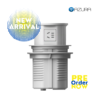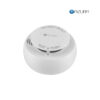Smart home users
A few years, recently; the demand for low power networks is the backbone of smart home technology; it has made others discover their technology when smart home opportunities increase. We have seen new people coming into space like Thread, and existing standardization groups such as the Bluetooth Special Interest Group (SIG); and the Wi-Fi Alliance announced their network protocol versions; with Bluetooth Mesh and Wi-Fi Harlow.
The thread is an initiative led by Google and other large companies interested in smart homes in 2014. This really addresses, IPv6 and is designed to work with Google; Nest but does not address product-level interoperability. Bluetooth Mesh was officially introduced by SIG in 2017; There are different functions compared to the point-to-point communication that Bluetooth is known today. Contributing Wi-Fi ribs to the grid was introduced even then.

What are the future goals?
The smart home market will continue to grow and so far; We have witnessed a big push for a standard or technology to dominate all. But we have a responsibility to help consumers understand what they are bringing into the house; The role of each technology in their common experience. For example, Wi-Fi will be part of any smart home; Especially if users want to be able to access their devices outside the home.
All wireless protocols have advantages and disadvantages, but the most important factors to apply to continue to be greater interoperability and security and greater product selection. It targets all of us – standard groups; producer; Retailers; developers – everyone in the smart home ecosystem; To bring the conversation forward and fulfill the promise of a connected life.









